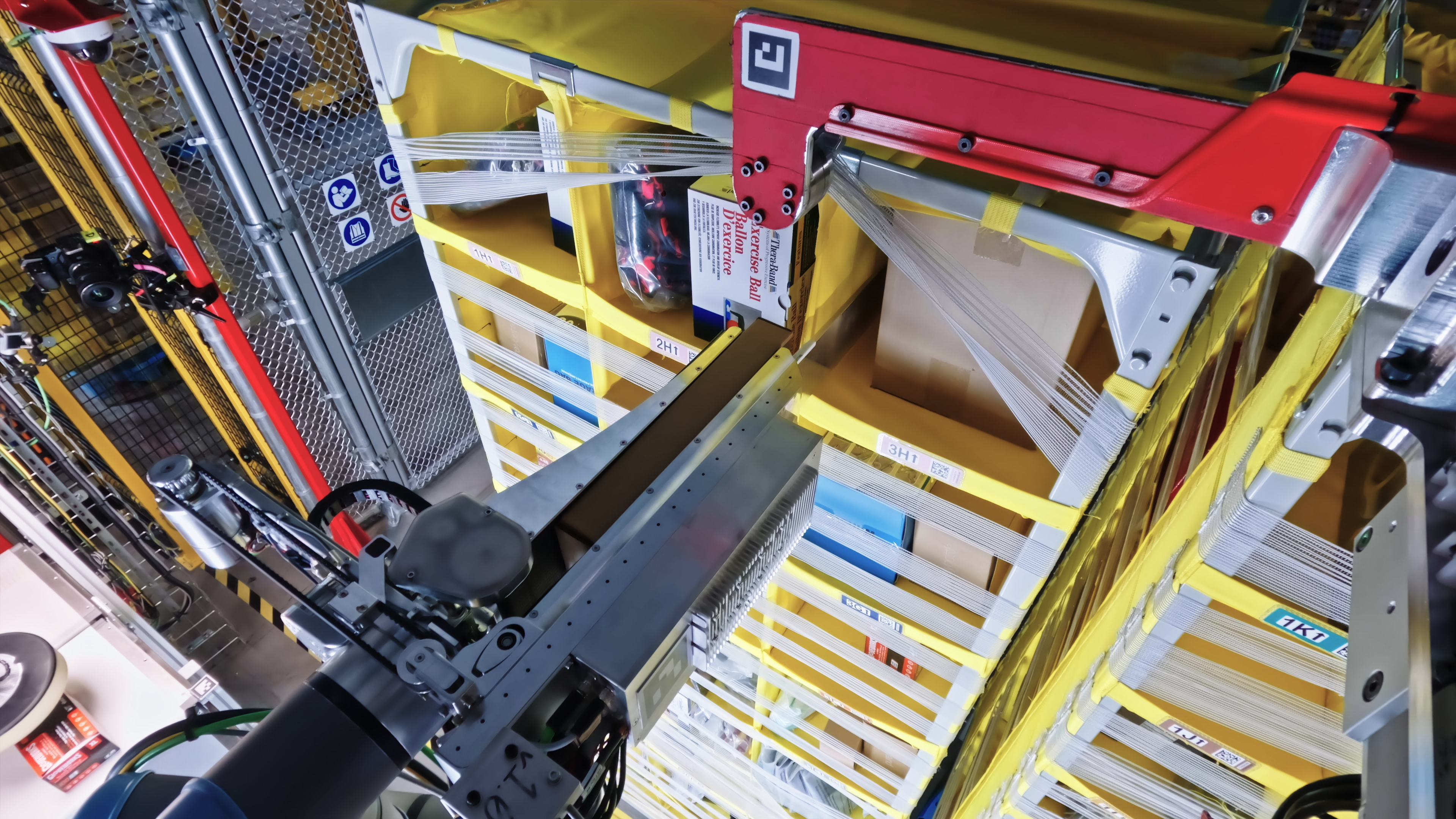Amazon has made a robot with a sense of touch. But how should its human staff feel?
The tech giant wants to change how we work and shop, allowing ever quicker deliveries, writes Andrew Griffin. But its advances with robotics could have further reaching consequences


Every day, an army of Amazon workers reach into tall felt pods in which the company’s products are stored before they are shipped.
Some of the workforce is human. But more and more of it is done by automated systems specifically built to pack boxes and sort packages.
Amazon hopes that over time it can automate more of the process, from the arrival of products in its warehouses to the “last mile” deliveries that put them in customers’ hands.
The latest in those developments is Vulcan, a robotic arm that has a sense of touch, so that it can feel the products it is picking up and avoid squashing or otherwise damaging them. It does so using an array of sensors built into a spatula-style arm that can find its way around products, analysing them to choose the right one and then selecting it for delivery.
For years, the company has been arguing that its expensive work on robotics will not make its human staff redundant; the aim is to supplement people, not replace them, it has said. But Vulcan is perhaps the most human of its systems yet – it does not have a humanoid shape, but it has acquired senses that were once thought to be the preserve only of people.
Development of the robot was led by Aaron Parness, director of applied science at Amazon Robotics. Teams were assembled in Seattle and Germany, and three years and 250 people later came Vulcan, which he says marks a profound change in the way that we use robots.
Parness has worked at Nasa, building robots for extreme environments including work on robots that were supposed to land on asteroids. But he says that Vulcan is the "biggest achievement of my career" and "certainly the most meaningful advance of our state of knowledge". That is in part because it is aimed at working in environments even more unpredictable than the chaos of space: Vulcan is built to be able to deal with human mess.
For now, that's Amazon's warehouses. Eventually it could make it out of the warehouses, Parness suggests – such as in the "last mile" of deliveries, where items are being put into delivery bags.
And from there, the same technology could spread quickly, he suggests. He pointed to "retail spaces and healthcare spaces". And "very long term – I don't want to tell you this is two years away, but very long term – our homes are the most cluttered environment we regularly inhabit, and you need touch and vision", and so the breakthroughs in Vulcan could eventually power a system that lives alongside us, he suggests. "I think that version that comes in 20 years will be standing on the shoulders of the advances we've made in the last two years".
Amazon has repeatedly said that it couldn't have robots take over completely, even if it wanted to: there are some things that automated systems just can't do. Vulcan, for instance, can pick up 75 per cent of items that are sold by Amazon – but the remainder, which includes things like liquids, might never be possible, so humans will occasionally have to do things instead. More broadly, the robots will always suffer problems and technical issues, and the company says that warehouse staff can retrain to fix and guide them.
"Really it's about leveraging robots to do the repetitive and less ergonomically friendly work, and using humans to use their problem solving ability in the cognitive work," says Parness.
Rather than making humans redundant, the company insists they will work hand-in-hand (or gripper). Vulcan for instance means that a human can work three times as quickly, allowing the robotic arm to pick the items while they do the rest of the work.
Much of this extra efficiency is being used in the name of speed. Soon after it unveiled Vulcan, Amazon said that it would be offering same-day deliveries at even later times, so that even people ordering after 6pm would get their packages before the day was out.
Amazon says that is a response to customer demands for quick items: when you need something for cooking a meal that night, for instance, speed is of the essence. But as with many of the recent innovations offered by the company – its drones, for instance – it also seems to be about shifting the way that people shop.
If deliveries keep getting quicker, then people will be able to buy more essential items; a toilet paper emergency could be solved by a quick delivery rather than a trip to the shops. That requires a whole host of speedy innovations, which will also include AI that can guess which essentials need to be where before people order them.
Amazon says that it delivered 80 per cent more essentials through same-day delivery in the first quarter of this year, compared with the same period the year before. Rocco Bräuniger, the company’s vice president for EU expansion, is keen to stress that the grocery and supermarket business is huge, and that Amazon does not see itself as replacing it.
It is an insistence that highlights the odd combination of innovation and anxiety at the heart of Amazon's robotics work: the company explicitly wants to change how we shop and work, but not in such a way as to run the risk of being accused of leaving people without jobs and fundamentally changing our cities.
Join our commenting forum
Join thought-provoking conversations, follow other Independent readers and see their replies
Comments